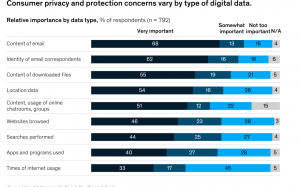— June 13, 2019
I have some insight for you: the purpose of strategic planning is not to make plans. In reality, strategic planning is done to change the way we think and act. If newly formed visions and strategic plans are intended to propel organizations to places they have never been, then they also require individuals to do things they have never done before. The fact is, successful change is all about behavior. The “act” trumps the “think” every time.
Leaders Must Pave The Way
Several years ago, a Fortune 300 company was preparing its strategic plan for launch at a January meeting of their top several hundred leaders. For three days, the leaders discussed the merits of the plan and the critical actions required to get results. The group seemed engaged. Just before the close of the three-day meeting, each person in the audience was given a device to anonymously vote on how confident they felt about the new strategy. The senior team assumed they’d get commitment and widespread support from the top leaders who had participated in the event.
But what flashed on the screen wasn’t what anyone expected…a stunningly low 19 percent vote of confidence by the top leaders of this 53,000-person company.
After the shock wore off, the executive team asked for reasons behind the mass skepticism. It turned out the lack of endorsement was because of straight up hypocrisy. The skepticism was rooted in the belief that senior leaders would be unable to change “old strategy” behaviors. It was eye-opening for the leaders, but once they got the message and corrected their personal behaviors, the strategy took off and drove the stock price to double.
Three Behaviors Leaders Must Embrace
Deeply embedded behaviors change much more slowly than marketplace factors and new strategic thinking. The speed at which leaders change their behaviors becomes the pace car for rolling out a new strategy or initiative. If you want to create change at your organization, make sure your leaders embrace these three behaviors:
- Be publicly vulnerable. Creating change across the organization requires leaders to take a good hard look at their reality. This only works if leaders go first in being brutally honest about the behaviors they must personally change.
- Let go. Letting go is hard, but essential to successful change. Letting go of the business we know means letting go of the actions, behaviors, and roles that have long provided a sense of value, achievement, and recognition. It also means people must let go of what they may be great at in favor of developing the new skills vital for the new change to succeed.
- Build speed through trust. To be successful with any new strategy, it is important for leaders to establish trust with everyone involved. When leaders prioritize behaviors that build trust, and follow a set of common beliefs as ground rules, they can execute more quickly and drive strategic change more effectively.
Change is never easy—for anyone. But leaders who don’t step into the discomfort of changing their own behavior will find what they are waiting for will never come. The emotional and behavioral change we expect of others must first be the expectations of ourselves too.
This is an excerpt to a white paper. The full paper can be found here.
Business & Finance Articles on Business 2 Community
(57)
Report Post




